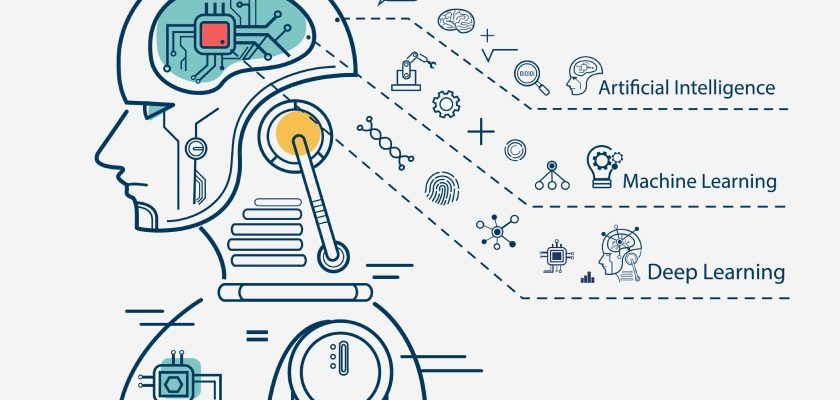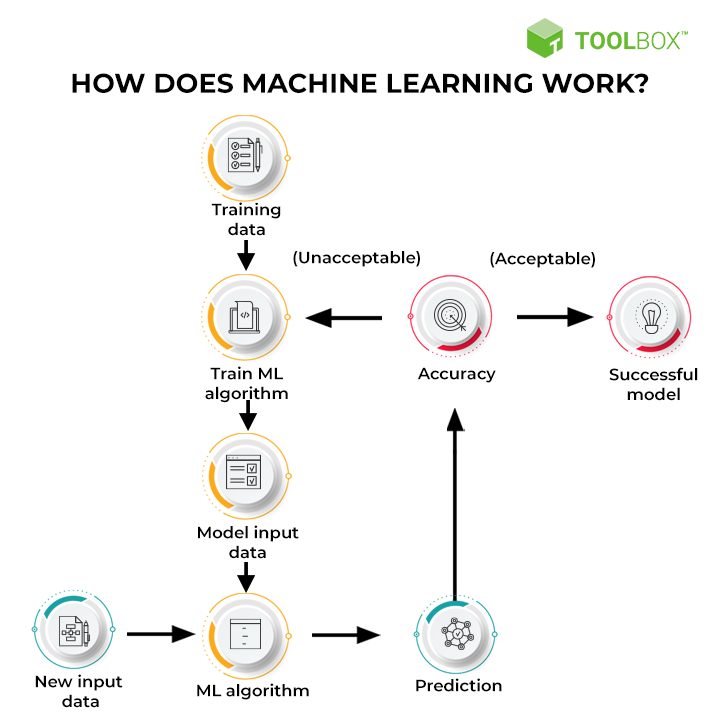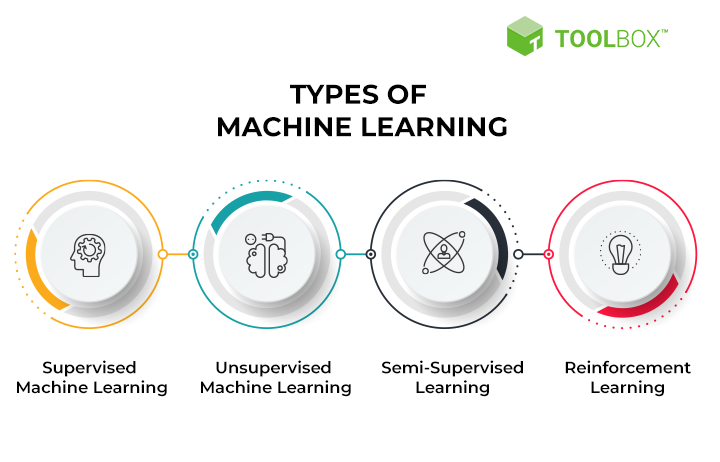- inquiry@v10x.com
- DSK Rohit, office No-13, 3rd Floor, 1264/2 Apte Road, Deccan Gymkhana, Shivajinagar, Pune - 411 004. Maharashtra, INDIA
Search for anything.
AI and Machine Learning
What Is Machine Learning?
Machine learning (ML) is a discipline of artificial intelligence (AI) that provides machines with the ability to automatically learn from data and past experiences while identifying patterns to make predictions with minimal human intervention.
Machine learning methods enable computers to operate autonomously without explicit programming. ML applications are fed with new data, and they can independently learn, grow, develop, and adapt.
Machine learning derives insightful information from large volumes of data by leveraging algorithms to identify patterns and learn in an iterative process. ML algorithms use computation methods to learn directly from data instead of relying on any predetermined equation that may serve as a model.
The performance of ML algorithms adaptively improves with an increase in the number of available samples during the ‘learning’ processes. For example, deep learning is a sub-domain of machine learning that trains computers to imitate natural human traits like learning from examples. It offers better performance parameters than conventional ML algorithms.
While machine learning is not a new concept – dating back to World War II when the Enigma Machine was used – the ability to apply complex mathematical calculations automatically to growing volumes and varieties of available data is a relatively recent development.

Today, with the rise of big data, IoT, and ubiquitous computing, machine learning has become essential for solving problems across numerous areas, such as
- Computational finance (credit scoring, algorithmic trading)
- Computer vision (facial recognition, motion tracking, object detection)
- Computational biology (DNA sequencing, brain tumor detection, drug discovery)
- Automotive, aerospace, and manufacturing (predictive maintenance)
- Natural language processing (voice recognition)
How does machine learning work?
Machine learning algorithms are molded on a training dataset to create a model. As new input data is introduced to the trained
ML algorithm, it uses the developed model to make a prediction.
ML algorithm, it uses the developed model to make a prediction.

Note: The above illustration discloses a high-level use case scenario. However, typical
machine learning examples may involve many other factors, variables, and steps.
machine learning examples may involve many other factors, variables, and steps.
Further, the prediction is checked for accuracy. Based on its accuracy, the ML algorithm is either deployed or trained repeatedly
with an augmented training dataset until the desired accuracy is achieved.
with an augmented training dataset until the desired accuracy is achieved.
Types of Machine Learning
Machine learning algorithms can be trained in many ways, with each method having its pros and cons.
Based on these methods and ways of learning, machine learning is broadly categorized into four main types:
Based on these methods and ways of learning, machine learning is broadly categorized into four main types:

Types of Machine Learning
1. Supervised machine learning
This type of ML involves supervision, where machines are trained on labeled datasets and enabled to predict outputs based on the provided training. The labeled dataset specifies that some input and output parameters are already mapped. Hence, the machine is trained with the input and corresponding output. A device is made to predict the outcome using the test dataset in subsequent phases.
For example, consider an input dataset of parrot and crow images. Initially, the machine is trained to understand the pictures, including the parrot and crow’s color, eyes, shape, and size. Post-training, an input picture of a parrot is provided, and the machine is expected to identify the object and predict the output. The trained machine checks for the various features of the object, such as color, eyes, shape, etc., in the input picture, to make a final prediction. This is the process of object identification in supervised machine learning.
The primary objective of the supervised learning technique is to map the input variable (a) with the output variable (b). Supervised machine learning is further classified into two broad categories:
- Classification: These refer to algorithms that address classification problems where the output variable is categorical; for example, yes or no, true or false, male or female, etc. Real-world applications of this category are evident in spam detection and email filtering.
Some known classification algorithms include the Random Forest Algorithm, Decision Tree Algorithm, Logistic Regression Algorithm, and Support Vector Machine Algorithm. - Regression: Regression algorithms handle regression problems where input and output variables have a linear relationship. These are known to predict continuous output variables. Examples include weather prediction, market trend analysis, etc.
Popular regression algorithms include the Simple Linear Regression Algorithm, Multivariate Regression Algorithm, Decision Tree Algorithm, and Lasso Regression.

